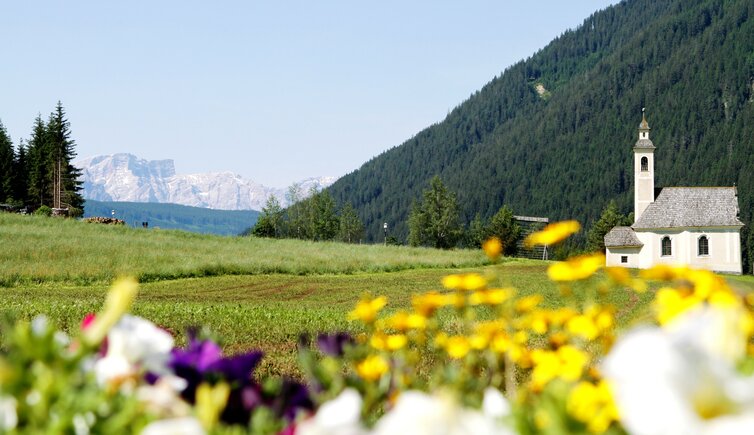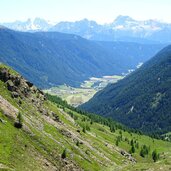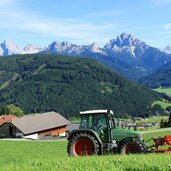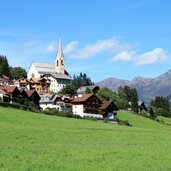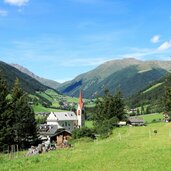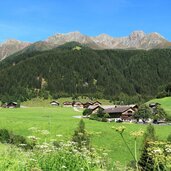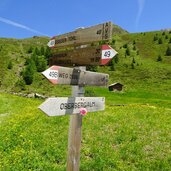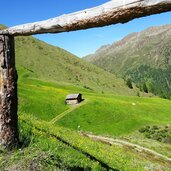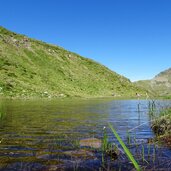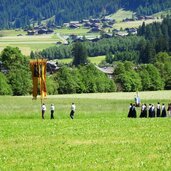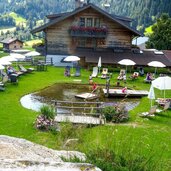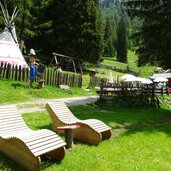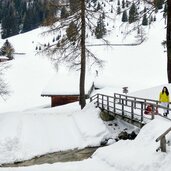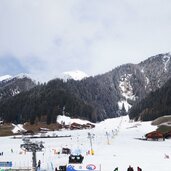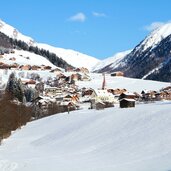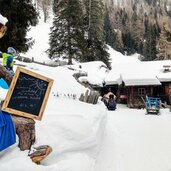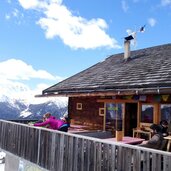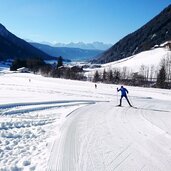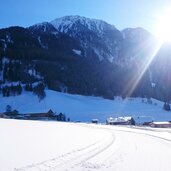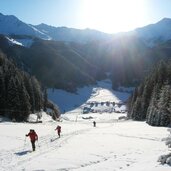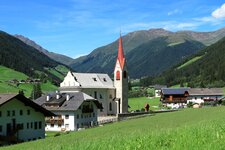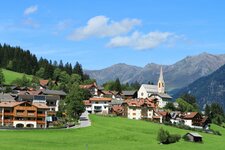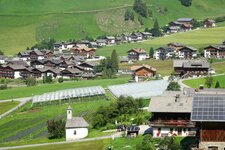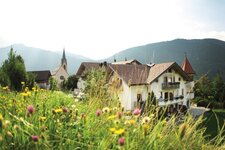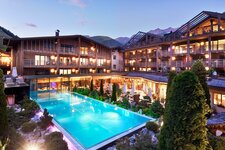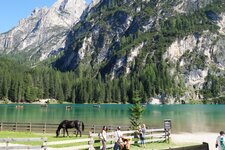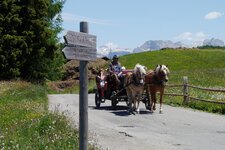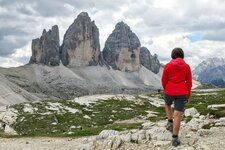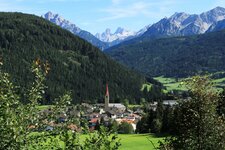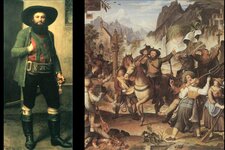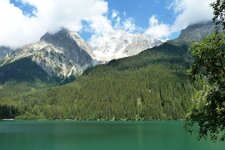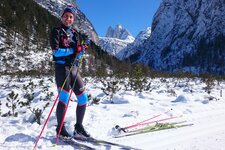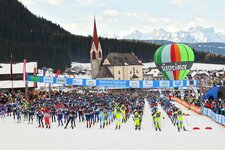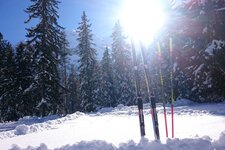The Val Casies is one of the most unspoilt valleys in South Tyrol: With its huts, it is a rewarding destination for active holidaymakers
Image gallery: Val Casies
In the Upper Val Pusteria, a valley branches off near Tesido that is known for its pristine nature, intact forests at the end of the valley, numerous hiking trails and traditional alpine huts. Where in summer the paths lead you to the mountain peaks, in winter, families toboggan down the slopes.
Ski tourers and locals conquer the steep flanks on skis. The Uwald Mountain Hut in particular, at an altitude of over 2,000 metres, is like a viewing platform from which you can look out over the entire Val Casies. At your feet lies Santa Maddalena at the end of the valley, one of the three villages of Casies.
The farms stretch as far as the next village, San Martino, with its Baroque parish church and Gothic tower. At the mouth of the Val Casies, where it meets the Val Pusteria, lies Colle. The valley is framed by the foothills of the Rieserferner Group and the Villgraten Mountains. In between are the well-known Casies Mountain Pastures, which are managed in both summer and winter. There, they serve platters of speck or an alpine breakfast.
It never gets boring here: Whether it's the Val Casies cross-country ski race in winter or the Val Casies Mountain Pasture Festival in summer, there is always something going on in the valley. Incidentally, its most famous citizen is Joachim Haspinger, one of the most renowned comrades-in-arms of Andreas Hofer in the Tyrolean Rebellion at the beginning of the 19th century.
His birthplace is in San Martino, the main village of the municipality. The Haspinger monument there depicts him as a warlike friar holding a cross aloft - a depiction that is also found in the Capuchin Garden in Chiusa and in the Andreas Hofer Museum in the Val Passiria.
